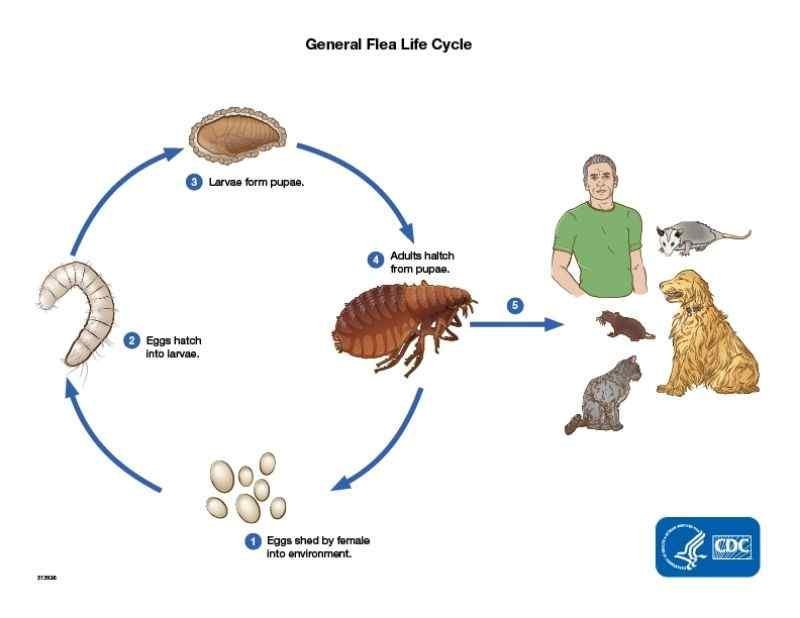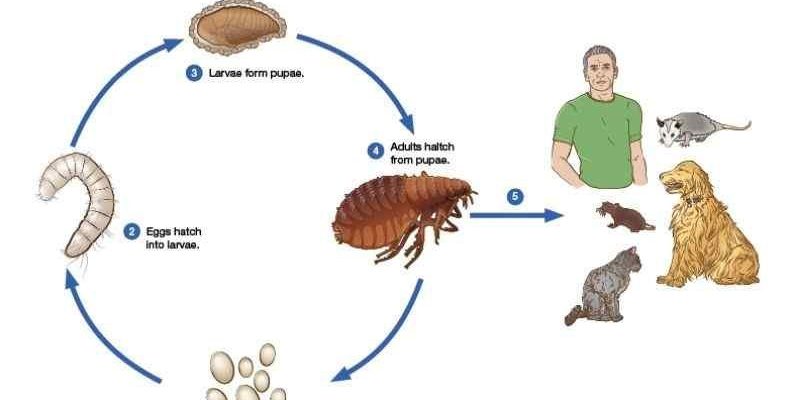
So, picture this: you have a cozy pet at home, and suddenly, you find these little jumping parasites hopping around. It’s essential to know how they develop and reproduce to fight the infestation. By breaking down the different stages of a flea’s lifecycle, we can learn how to protect our furry friends and ourselves. Let’s dive into the intriguing world of fleas and their transformation from eggs to adults.
The Flea Egg Stage
Flea eggs are the quiet beginning of this pest’s lifecycle. After a female flea has enjoyed a nice meal of blood, she lays around 20 to 30 eggs each day. These eggs are tiny, about the size of a pinhead, and often fall off their host into carpets, bedding, or your pet’s fur. You might not even notice them at first, which is part of the challenge!
These eggs typically take about two days to two weeks to hatch. The time depends on various factors such as temperature and humidity. Flea eggs thrive in warm, humid environments, so if your home has those conditions, it’s perfect for a flea population explosion! You might be wondering: how do you even get rid of these eggs? Regular vacuuming and washing pet bedding can go a long way in disrupting their hatching process.
The Larval Stage
Once the flea eggs hatch, they enter the larval stage. Flea larvae are tiny, worm-like creatures that are blind and rely on their environment for survival. They feed on organic debris, including flea feces, which is packed with undigested blood—yum, right?
This stage lasts about one to two weeks, during which they grow and molt a few times. As they develop, they’ll often seek out dark, hidden areas to avoid light. This is why you might find them nestled deep in your carpet fibers or under furniture. Here’s the thing: keeping your home clean is crucial during this stage. Regular vacuuming not only removes larvae but also disrupts their hiding spots.
The Pupae Stage
After the larval stage, flea larvae spin themselves into a cocoon, entering the pupae stage. This is where things get interesting. In a cocoon, fleas can take days to even months to emerge as adults, depending on environmental conditions. The pupae are remarkably resilient; they can wait out unfavorable conditions before hatching. It’s like they have a built-in emergency plan!
During this stage, vibrations, heat, and carbon dioxide from pets or humans can trigger their emergence. So, if you thought cleaning up would mean the end of your flea problem, think again! Those little buggers could still be lurking in their cozy cocoons, waiting for the perfect moment to jump back into action.
The Adult Flea Stage
Finally, we reach the adult flea stage—the most recognizable and troublesome part of the lifecycle. Adult fleas are excellent jumpers, capable of leaping over 150 times their body length. They can also live without a meal for several months, which makes elimination a real challenge.
Once they find a host, adult fleas start feeding on blood and mating almost immediately. A fertilized female can lay eggs just a few days later, ensuring the cycle continues. Adult fleas can pose health risks to pets and humans through bites and potential disease transmissions. This is why it’s so important to tackle the problem head-on, targeting all life stages, including eggs, larvae, pupae, and adults.
Why Understanding the Lifecycle Matters
Realizing the lifecycle of a flea is crucial for effective pest control. Many people think tackling just the adult stage is enough, but without addressing the eggs and larvae, they’ll keep coming back. Here’s what you can do:
- Use a multi-faceted approach: Apply treatments that target all life stages, not just adults.
- Keep your environment clean: Regularly vacuum carpets and wash pet bedding to disrupt the lifecycle.
- Consult professionals: If the infestation is severe, it might be wise to hire pest control experts.
When you understand how fleas develop, it empowers you to take comprehensive measures to keep your home flea-free.
Common Misconceptions About Fleas
Many myths surround fleas that can lead to ineffective pest control. For instance, some believe that fleas can only live on pets. However, adult fleas can be found in carpets, upholstery, and even on humans. Here are a few common misconceptions to clear up:
- Fleas only affect pets: While they prefer animals, humans can also be bitten.
- Fleas can be completely eliminated with one treatment: This isn’t usually possible; they often require multiple treatments to get rid of all life stages.
- Fleas are only a summer problem: Fleas can thrive indoors year-round, especially in warm, humid environments.
By dispelling these myths, you can approach flea control with a clearer understanding and more effective strategies.
So there you have it—the lifecycle of a flea from egg to adult is not just a story of annoying pests but a complex journey that requires attention and action. Understanding this cycle is key to keeping your home free from these pesky invaders.
Remember, it’s not just about eliminating adult fleas; you need to target every stage in this lifecycle. Whether you’re using treatments, cleaning your home, or seeking professional help, being proactive is the best way to keep your pets and family safe from fleas. Armed with this knowledge, you’re now better equipped to tackle any flea problem that comes your way. Happy battling!

